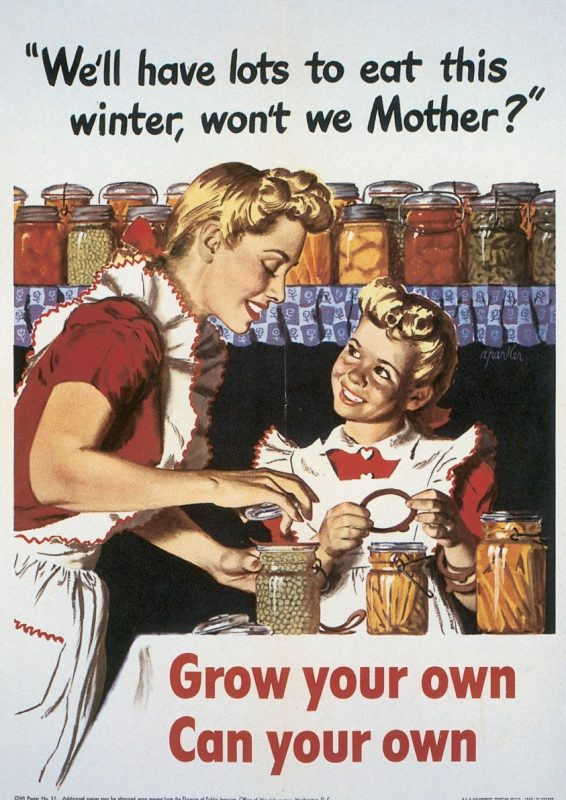Having been born and raised in the country, I can conjure up a pot of soup out of just about anything in my pantry, provided I have an onion to start. During the current corona virus panic, I was at all three grocery stores recently before I found that prized onion. It reminded me of the need for a new 2020 version of the Victory Gardens of the war years.
Many people believe that Victory Gardens came about during World War II, but in fact, the first ones were planted during World War I. A severe food crisis emerged as agricultural workers in Europe were recruited into the military leaving civilians to starve. The United States was recruited to help feed these people.
Charles Lathrop Pack organized the National War Garden Commission which encouraged citizens to contribute to the war effort by raising their own food so that more of the commercially grown produce could be funneled into feeding the troops. People were urged to use any available land for agricultural production- backyards, vacant lots, parks, etc.
By planting your own vegetables, Americans were told they were “sowing the seeds of victory” which is how the name “Victory Garden” came into being. Since canned goods were rationed, this helped stretch ration coupons further and promoted self reliance and self sufficiency. As a result of these efforts, 3 million new garden plots were planted in 1917 and 5.2 million in 1918, resulting in 1.45 million quarts of home canned fruits and vegetables.
Fast forward to WWII and again, as commercially grown food was diverted to the war effort, Victory Gardens once again became popular. Even First Lady Eleanor Roosevelt planted a Victory Garden on the White House lawn. At it’s peak, there were 20 million gardens planted – one for every seven citizens. By 1944, 40% of all the vegetables grown in the United States came from home gardens.
The current corona virus pandemic has taught me a lesson. Even though I have always planted a garden every summer, and of course we have the greenhouse produce through the winter, I need to step up my efforts to expand my varieties to include that onion or potato this year. Self sufficiency and self reliance are good things and, if you have seeds, you will always be able to eat. So over the next few columns, I want to share some ways for you to do this.
If you’ve never gardened, are new to vegetable gardening, or simply want to keep it under control, you can start with a method called square foot gardening. Popularized by Mel Bartholomew in 1981, this method means that you divide your garden plot into a grid, each measuring one foot by one foot. The original square foot plot was 4′ x 4′ which was then divided into one square foot sections. This took little space and was typically done as a raised bed but the concept could work anywhere. You then planted one kind of vegetable in each of those square foot sections. This kept a garden manageable as you could simply plant, fertilize, and weed a section at a time. If you make a raised bed, I can’t stress enough the importance of filling it with good soil. It will make a difference!
Some vegetables, like tomatoes, would be planted with a single plant per square foot. Others, like lettuce, radishes, or herbs could have many per square foot section. You need to match your plants to the space though and crops like melons, for instance, that tend to get big and send very long runners, may not be suitable for this method. Plants like peppers, tomatoes, lettuces, radishes, herbs, and more will all work well and produce an abundant harvest in your small space. One of the nice benefits is also, since it’s small, it’s easy to cover if we have a late frost and easy to protect from pests.
Unlike many other activities, gardening has not been cancelled this spring. As the perfect multi-generational activity, it’s a great way to get outside and burn off some excess energy, while producing something beautiful or edible while enjoying some fresh air and sunshine. Besides, moving forward from this current crisis it may be more important than ever to have some food “put by” as my mother used to say. I challenge you to start a 2020 Victory Garden of your own – you might be happy you did when you go looking for that elusive onion!

